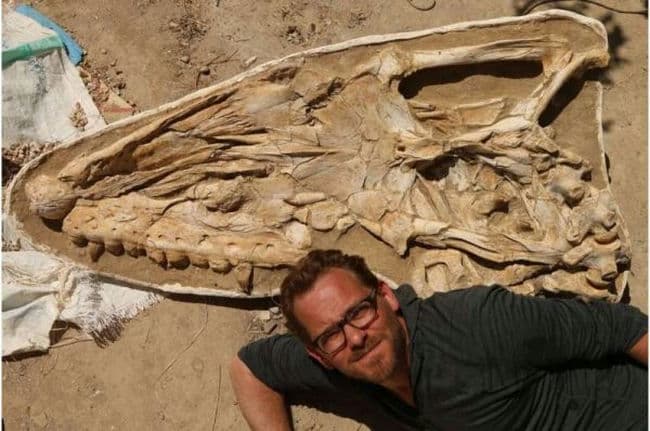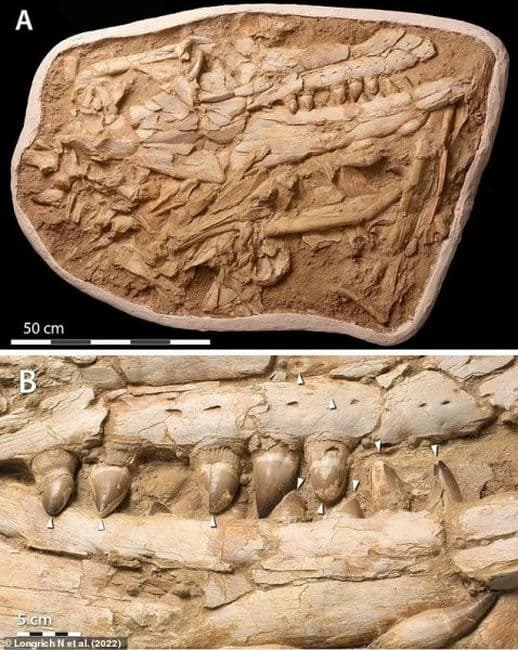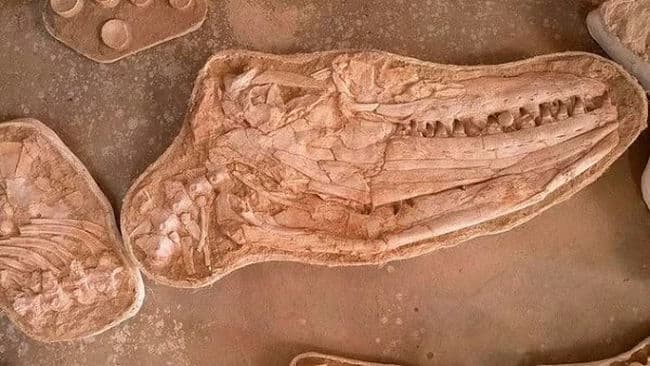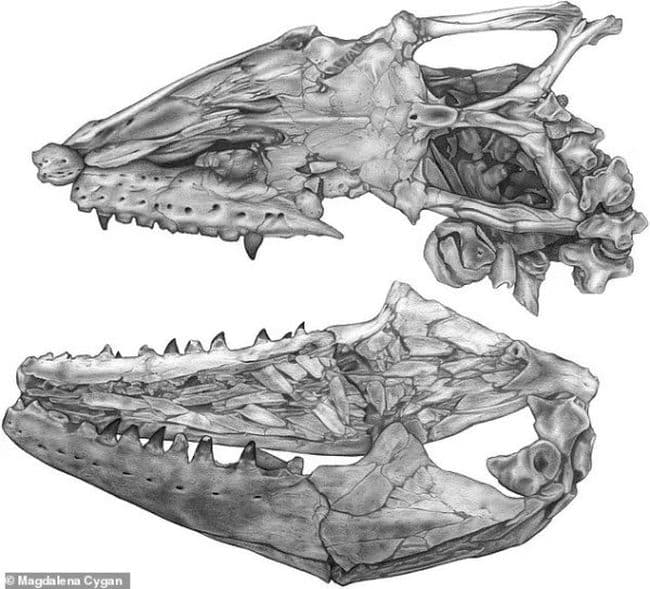A team of researchers from the University of Bath in the United Kingdom has uncovered the fossil of a new mosasaur species that once ruled the seas during the Cretaceous period.

Named Thalassotitan atrox, the marine lizard was an apex predator that thrived in the waters of Morocco alongside other prehistoric giants. Thalassotitan atrox, which translates to “merciless sea giant” in Greek, represents an impressive and terrifying addition to the family of mosasaurs.
Described by study leader Dr. Nick Longrich as an “amazing, terrifying animal,” Thalassotitan atrox had a length of almost 30 feet and featured a massive 5-foot-long skull.

The creature’s stout muzzle and large, orca-like teeth set it apart from other mosasaur species. This unique dental structure suggests a predilection for hunting large marine reptiles, including sea turtles, plesiosaurs, and other mosasaurs.
The researchers speculate that the chipped and broken teeth found in the fossil may have resulted from violent attacks on prey and the subsequent bone-chewing.

The fossil of Thalassotitan atrox was discovered in an area of Morocco that was submerged during the late Cretaceous period. This region has yielded several mosasaur fossils, indicating that Morocco was home to approximately 30 different mosasaur species.

Thalassotitan atrox’s formidable size makes it one of the largest mosasaurs, although not the largest. Mosasaurus hoffmanni, a different species discovered in Russia in 2014, was estimated to be around 56 feet long.
The discovery of Thalassotitan atrox provides valuable insights into the diverse and complex ecosystems that existed during the late Cretaceous period, showcasing the rich history of marine life on Earth.

